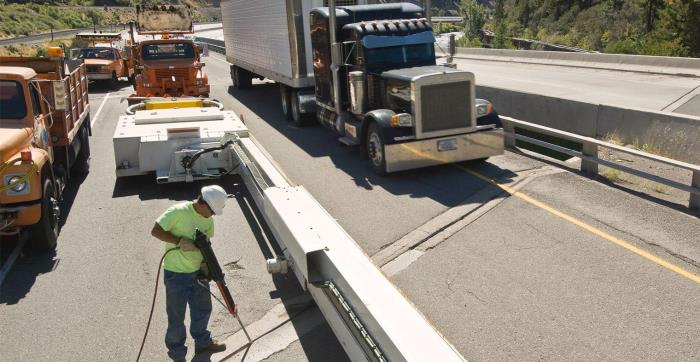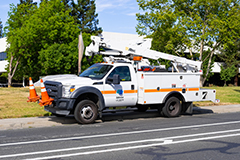Caltrans has a plan, literally, to make things safer

Caltrans Headquarters photograph
RSAP’s aspirational goal is to eliminate roadway deaths, serious injuries by 2050
This is the first year that Caltrans is implementing road safety actions identified in the biennial Road Safety Action Plan (RSAP) that enhances road safety for every traveler on California’s roadways.
The 2023-2024 RSAP is Caltrans’ roadmap to embedding the Safe System Approach in all its functions. It guides Caltrans in meeting its aspirational goal to eliminate all fatal and serious-injury crashes by 2050.
The RSAP provides a framework for realizing Caltrans’ safety vision. It advances the work that began with the creation of the Division of Safety Programs in 2020 and release in 2021 of the very first Director’s Policy on Road Safety (DP-36), which adopts the Safe System Approach.
To establish an RSAP process, Caltrans identified single points of contact or Safe System Leads (SSLs) within each district and major headquarters division. Together, 26 statewide SSLs identified 14 actions of statewide significance to focus on safe system outcomes in every stage of the project lifecycle including, planning, alternatives assessment, design, construction, operations and maintenance.
The actions included in the RSAP focus on reducing risks for all users, including those who drive, walk, ride or use other modes of transportation and therefore advance Caltrans’ goals of enhancing multimodal transportation, equity and livability in all communities.
The work of the RSAP is divided into four specific categories:
- Integration of safety into Caltrans policies
- Best safety practices
- Data collection and databases
- Public outreach

Caltrans photograph
The roots of the RSAP run deep and reflect Safe System best practices at the state, federal and global level.
The U.S. Department of Transportation in 2022 released a comprehensive National Roadway Safety Strategy matched by once-in-a-generation funding for safety advances nationally under the federal Infrastructure Investment and Jobs Act (IIJA), which was signed in 2021. The IIJA further embeds the Safe System Approach in traffic safety through integration with the various federally funded grants and programs. The California State Transportation Agency is one of the Allies in Action embracing the National Roadway Safety Strategy.
FHWA points out that “applying the Safe System approach involves anticipating human mistakes by designing and managing road infrastructure to keep the risk of a mistake low; and when a mistake leads to a crash, the impact on the human body doesn’t result in a fatality or serious injury. Road design and management should encourage safe speeds and manipulate appropriate crash angles to reduce injury severity.”
The Safe System approach is based on the following six principles at its core:
- Eliminate death and serious injury
- Responsibility is shared
- Redundancy is crucial
- Humans make mistakes
- Safety is proactive
- Humans are vulnerable and reactive
While the first RSAP covers actions to be completed in the years 2023-2024, this will be an ongoing effort with updates every two years. Caltrans will share the insights from this plan with the local agencies across the state to enable them to support the statewide road safety goals.
Traffic fatalities and injuries demand a broad-based and aggressive response. The systematic and coordinated efforts through RSAP create a strong policy framework for adopting the safe system approach over the next two years and help maintain a long-lasting focus on eliminating fatal and serious injuries by 2050.
Source: Shum Preston, Headquarters public information officer

